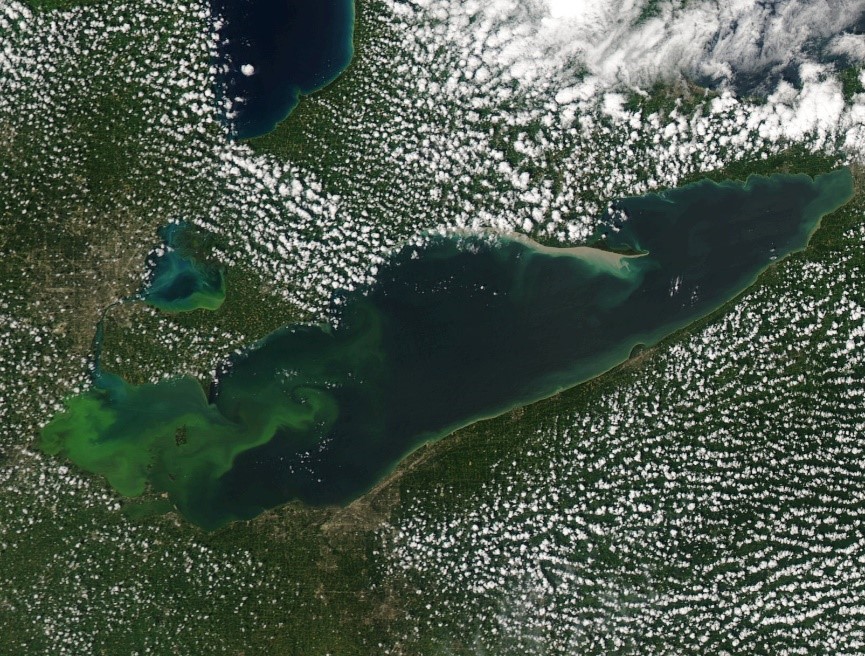Spring 2019 eNewsletter
Featured Research
Toward Environmental Policies that We All Love: Social Science Research Informs HAB Reduction Efforts
Excessive nutrients threaten the health of the Great Lakes and the communities that surround them. The harmful algal blooms (HABs) and low oxygen (hypoxia) that plague Lake Erie each summer and fall are the symptoms of inadequate land management that fails to prevent nitrogen and phosphorus from washing into the lake from agricultural areas. Developing socially-acceptable policies to better manage nutrients on the land has been a challenge, slowing progress toward improved water quality. CIGLR, NOAA GLERL, and partners are using social science methods to better understand what causes people to support or oppose regulatory policies to reduce agricultural runoff and curb algal blooms. They hope that their results will help to develop policies that are acceptable to diverse communities with different beliefs and backgrounds.

Satellite image of July 2015 Lake Erie harmful algal bloom. Photo Credit: NOAA GLERL.
In the absence of concrete information about a policy’s potential effectiveness, people’s attitudes toward environmental policy are often shaped by their values, beliefs, trust, and risk perception. Dr. Tian Guo, CIGLR’s first social science postdoctoral research fellow, is leading an effort to understand the psychological determinants of public attitudes toward policies for HABs control.
Dr. Guo recently conducted a survey to measure the public’s awareness of harmful algal blooms and policy preferences. “Citizen groups such as the Toledo Rotary Club and various experts in communication, agriculture, and ecology contributed to the questionnaire design,” said Guo. “The first wave of data collection included one thousand Ohio residents.” Using statistical analyses, Dr. Guo found that people’s risk perception, trust in farmers, and awareness about regulation successes are key in predicting attitudes toward regulatory nutrient reduction policies. She also evaluated the relationship between water quality perception and policy support. “Our data analysis shows that water quality perception did not predict policy support, which is surprising. One explanation may be a limitation in fully understanding the intricate ecology of the lake and how human actions affect it,” says Guo.
Intrigued by the current political climate, Dr. Guo has also looked at how political ideology and environmental worldviews affect policy support. In a recent paper published in the Journal of Environmental Management, Dr. Guo and colleagues found that political ideology affects how much news people received about harmful algal blooms, leading to different risk perception and policy support. “Our work shows the importance of outreach and communications in fostering broad environmental literacy and strengthening environmental values,” says Guo.
Related Resources
Guo, T., Nisbet, E.C. and Martin, J.F. 2019. Identifying mechanisms of environmental decision-making: How ideology and geographic proximity influence public support for managing agricultural runoff to curb harmful algal blooms. Journal of Environmental Management. 241:264-272. DOI:10.1016/j.jenvman.2019.04.021
